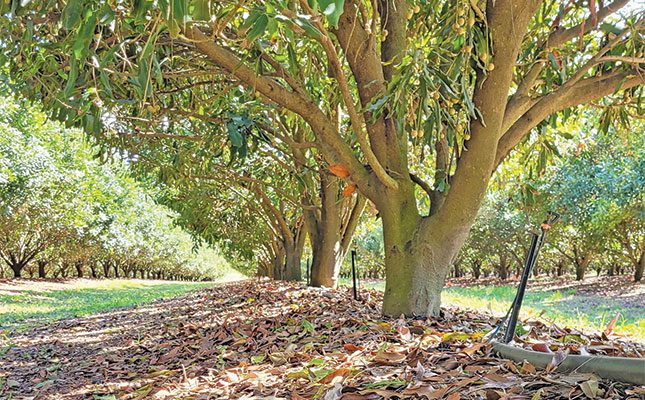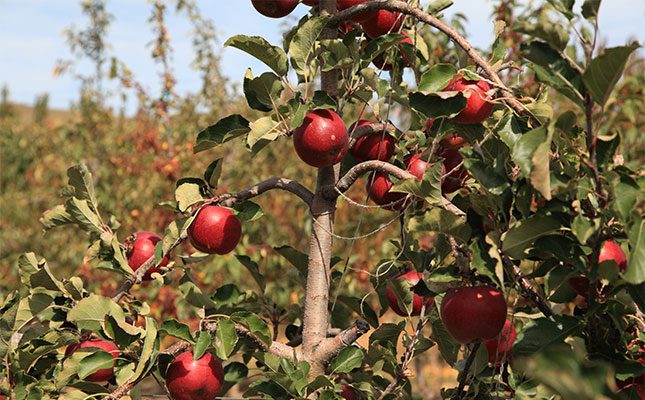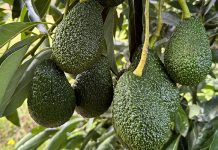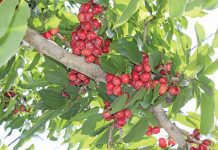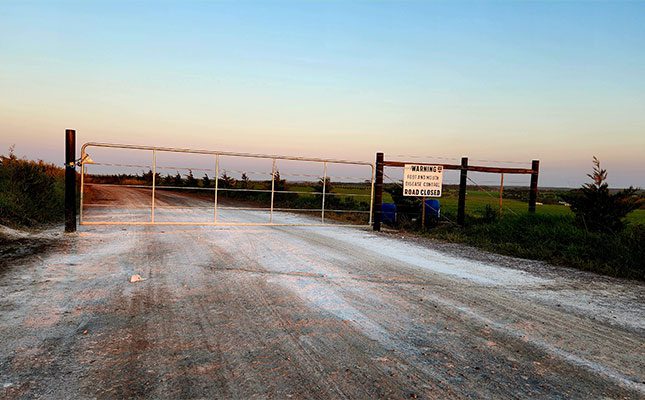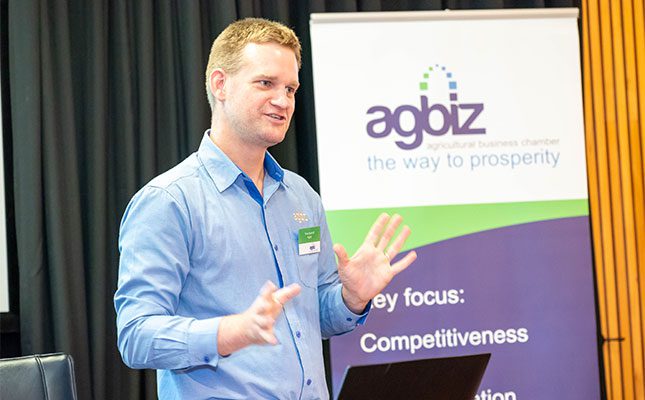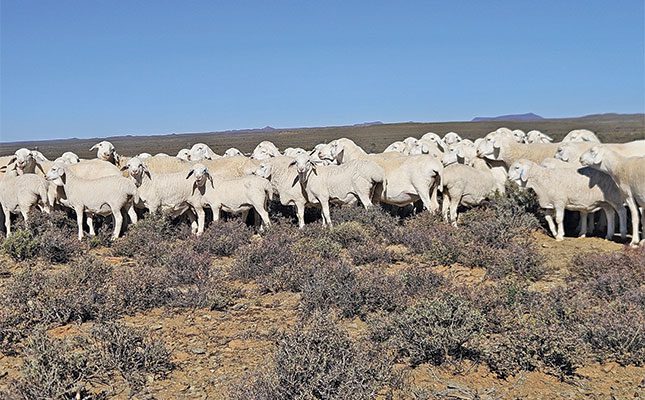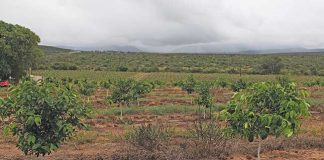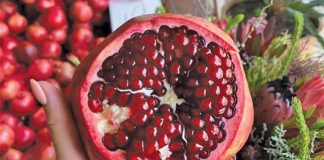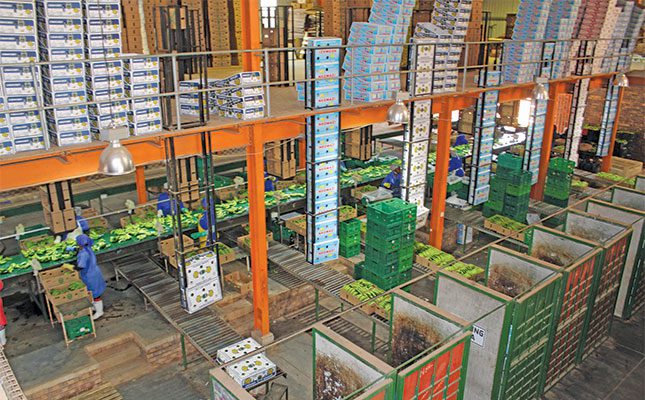
Photo: Lindi Botha
After nearly three decades of banana farming, and experiencing plantations across South Africa, Mozambique, India and Costa Rica, Jacques de Villiers has learnt that while no two plantations are alike, the principles of timing, precision and discipline never change.
When he took over the Giba banana farm in Kiepersol, Mpumalanga, in 2023, he drew on that experience to rebuild the farm, proving that innovation and strict management can turn even the most neglected operation into a productive enterprise.
Giba farm belongs to the Giba Community Property Association (CPA), having been returned to the community in 2012 following a successful land claim. The farm was recapitalised by the Mpumalanga Department of Agriculture, Rural Development, Land and Environmental Affairs, and leased to various farmers over the years.
After a hurricane in 2022, only 75ha of bananas were replanted before the farm came up for lease again. In 2023, De Villiers signed a lease agreement with the association, taking over the management of the farm.
He saw the potential in the farm, but with very little cash flow and no assistance from the banks, he had to cut expenses to the bone and find innovative ways to reinvigorate production. He pooled all the available research on banana production, along with all the management practices he had refined over the years to create a management strategy for the farm. Key to this strategy was shunning the common practice of replanting older plantations.

Banana plantations are typically replanted every eight to 12 years. This is mostly because wind and pests reduce plant population over time, leaving significant gaps in the plantation, which reduce overall yield.
“I’ve seen plantations in Cost Rica that are over 80 years old and still going strong. If they are managed correctly, yields and quality are on par with younger plantations.”
Since the irrigation system is gravity fed, pumping costs are low, allowing De Villiers leeway to irrigate unproductive blocks. Rather than replant the destitute plantations, he started irrigating them to revive the plants, allowing up to three suckers on every plant to grow out. Within two years these blocks recovered to a desired planting density of around 2 000 plants/ha.
Giba’s oldest plantations are already at the 12-year mark and deliver some of the best yields on the farm, averaging around 60t/ha.
The over-arching principle of De Villiers’s strategy is the correct timing of critical activities on the farm, by a labour force that is trained and closely monitored.
Production management
De Villiers states that financially sound banana production requires keeping to a strict schedule where certain activities need to be done on time, every time, or yield and quality are sacrificed.
The deflowering must be done to signal the plant to push its energy into the hanging fruit, instead of developing new flowers. De Villiers notes that this is not a process that can be delayed and must be done every week.
All the flowers that have been removed are counted and recorded since deflowering sets the timeline for harvest.
“In summer, we average around 14 weeks from deflowering to harvest, with winter taking up to 24 weeks. If I have the deflowering count, then I know how many bunches I can expect in the packhouse in the weeks that follow and can ensure I have the staff and boxes in which to pack the fruit. This way I am not caught off guard by an incoming harvest,” De Villiers explains.
This data is further supplemented by counting bunches that will be harvested the following week. These bunches are marked by inserting pieces of coloured string into the plant stem. Each week a different colour is used so that staff can keep track of which bunches are being targeted in that week.
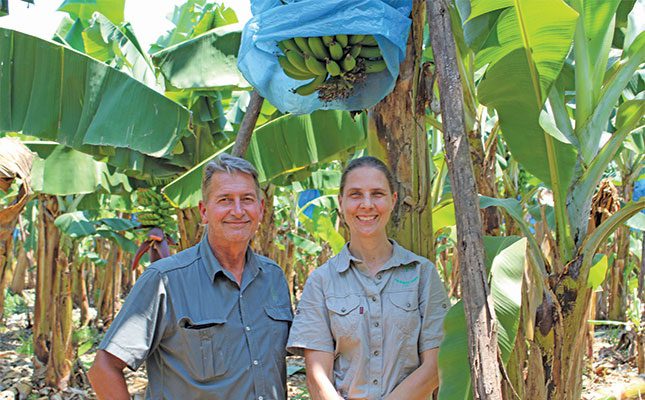
The data is captured on a spreadsheet and updated with the number of bunches that was actually sent to the packhouse the following week. If there are more than five bunches less than what was anticipated, De Villiers investigates and follows with remedial action.
Keeping track of the plants’ physiological state is not only important to stay on top of the harvest, but in timing supply to the market. May to September is the main harvesting season for banana production hubs in Komatipoort and Mozambique.
This means De Villiers needs to avoid sending excessive volumes to market during this time, or risk prices being dropped. To manage timing in the market, suckers that will replace the harvested plant need to be managed to ensure the plant’s growth cycle matches a favourable market cycle. This could mean removing suckers on the plant to delay the growth cycle.
Suckers are selected every four weeks in summer and every six weeks in winter.
Another weekly activity is hanging bags around the banana bunches. This must be carefully timed to ensure that it is not done too late or too soon in the bunches’ development as both would risk yield and quality.
Selecting suckers
In his quest to keep plantations in peak production beyond 12 years, De Villiers states that he has declared a war on gaps.
Achieving and maintaining optimal density of plants requires careful management of suckers. Left to grow, suckers emerging from all around the corm will result in an overgrown, chaotic plantation, making it difficult for staff to move around. Plantations that are too dense are also dark, which results in smaller fruit and higher disease pressure.
Plantations where there are too many gaps receive too much sunlight, which prevents a favourable micro-climate from developing. The harsh sun also burns up the crop residues, impacting soil health and moisture retention.
De Villiers therefore aims for a density that allows for 85% of the plantation floor to be shaded. This translates to a density of around 2 000 to 2 200 plants per hectare. He notes that although historic data for the Kiepersol area advises a density of 1 800 plants per hectare, the inevitability of plants toppling over from wind or pests means that he rather aims higher to maintain the right density over a long period.
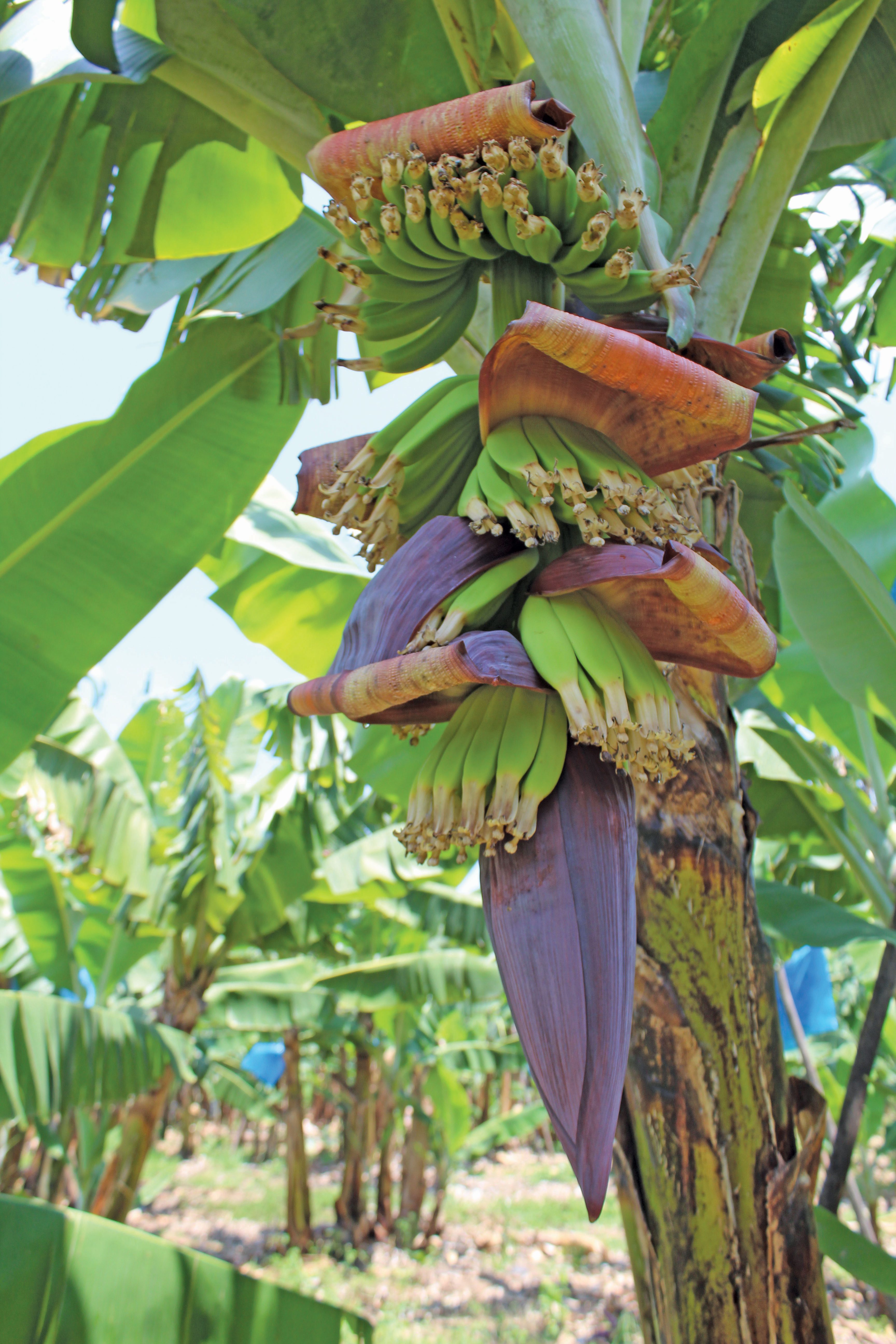
Suckers are selected based on the direction in which they are growing, and their strength.
“We usually select only one replacement sucker where we are on desired density, but leave one on each side of the plant when there is a gap from a plant that has fallen over. Sucker direction is determined by the direction bunches emerge to, usually north-east to north-west in the Southern Hemisphere. It is not always possible, because you also have to select the strongest sucker, and preference should be given to maintaining plant density rather than strictly keeping to rows.
“A strong sucker has a conical shape, and good attachment to the corm. It should feel firm and well rooted when you grip it. The first sucker to emerge on the plant is usually not the strongest, and it should be gouged out to signal to the plant to produce another. The second- or third-generation sucker is then usually chosen.Selection should be made when the sucker is around 40cm high,” De Villiers explains.
A challenge in managing older plantations is that uneven growth of suckers across a plantation can result in multiple harvest times for each block. De Villiers says this can be managed, but does create a lag in cash flow.
“If the plants are out of sync, the suckers can all be removed at once to push the plants to produce new suckers, all at the same time.”
While De Villiers has seen much success with keeping older plantations in production by allowing suckers to grow out, he is replanting select plantations to capitalise on better genetics. By January 2026, some 10ha would have been replanted to the Williams cultivar, with 40ha to follow later in the year.
De Villiers prefers the Williams cultivar to the current Cavendish variety planted on the farm since the Williams produces better quality bunches, and is more resilient in adverse climatic years.
Optimising nutrients
While cash flow was limited when De Villiers took over the Giba banana plantations, he did not skimp on fertiliser.
“When times are tough, you especially need to fertilise so that you have a sufficient harvest to get you through. If you try to save on fertiliser, you will save yourself into bankruptcy.”
He however notes that plantations should be fertilised according to their potential.
“It is wasteful to fertiliser for a 60t/ha harvest when the plants are scraggly, and it’s highly unlikely they will achieve 60t/ha. Rather give the better blocks a little extra fertiliser to get them to produce the maximum yields, and then with that income, do what you can to help the struggling blocks.”
Soil sampling is fundamental to efficient fertiliser applications, as is using an accredited laboratory to analyse the soil. De Villiers notes that he has received vastly varying results from one year to the next when using unaccredited laboratories.
He also advocates for using an independent consultant to help interpret the results and make recommendations, rather than someone who is working for or connected to a company that sells fertiliser.
Bananas thrive in soils that have a pH of 6,5 to 7,5. Since Giba’s soils lag behind, De Villiers applies micro-lime, which is better absorbed in the soil than conventional lime.
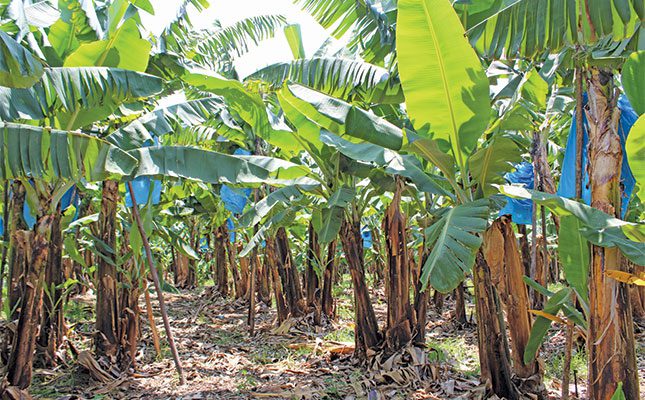
A significant breakthrough De Villiers made was in reducing his fertiliser applications by 30% during the last year by applying NC32 – a carbon-integrated nitrogen that prevents leaching. NC32 is still in its trial phase, but has already proved its worth on the farm.
“Unlike slow-release products, NC32 binds the nutrient applications in the soil where it is placed, allowing the nutrients to be absorbed by the plant when it needs it. It’s like having on-demand fertiliser, without wasting anything.
“Where we applied NC32 in April, for example, we saw a massive growth spurt in the plants in spring, as if they had just been given fertiliser.”
The farm has two dominant soil types – Red Hutton, and sandy soil. The NC32 has helped to increase yields on the sandy soils since the nutrients do not leach, as is common with sandy soils.
De Villiers applies nitrogen through the irrigation system, while potassium and phosphates are applied by hand. This is since the latter two are pricier, and De Villiers can’t afford to apply these nutrients where they will not be optimally absorbed by the plants. Four applications are applied each year.
Biological pest control
Another breakthrough has been eradicating banana weevils to a large extent on the farm. Previously, De Villiers faced many plants that fell over from high infestation levels.
Last year, he started implementing a biological pest control programme that consists of applying four doses of Mos Blend and Bio Pest through the irrigation system per year. These contain beneficial micro-organisms that fight pests, improve the soil, and help to make nutrients more bioavailable. This has removed the burden of thrips, snails, and weevils.
The only synthetic chemical used on the farm is glyphosate, to clear excessive weed growth that hampers irrigation. For the most part, weeds are left to grow and then periodically slashed. De Villiers explains that weeds are important to keep the soil covered and conserve moisture.
“We get around 800m of rain per year, which mostly falls in summer. By keeping the soil covered, the moisture is retained in the soil and we hardly have to irrigate in summer.
“Because the area is very hilly, rain is inclined to wash away the soil. We’ve found that by keeping the plantation floor covered in weeds, the erosion is greatly reduced.”
When weeds are slashed, they are left in the field. This adds to the mulch layer in the plantation, acting as a weed suppressant.
Managing labour for quality and efficiency
Labour is one of the biggest expenses in banana production as the crop is highly labour intensive, requiring around 0,8 to 0,95 people per hectare. Going above this rate makes labour unaffordable.
De Villiers quips that his fanaticism over data stems from the need to keep labour costs as low as possible. By tracking the exact volumes of bananas produced, he can determine precisely how many people are required in each segment of the operation – from harvesters to packers.
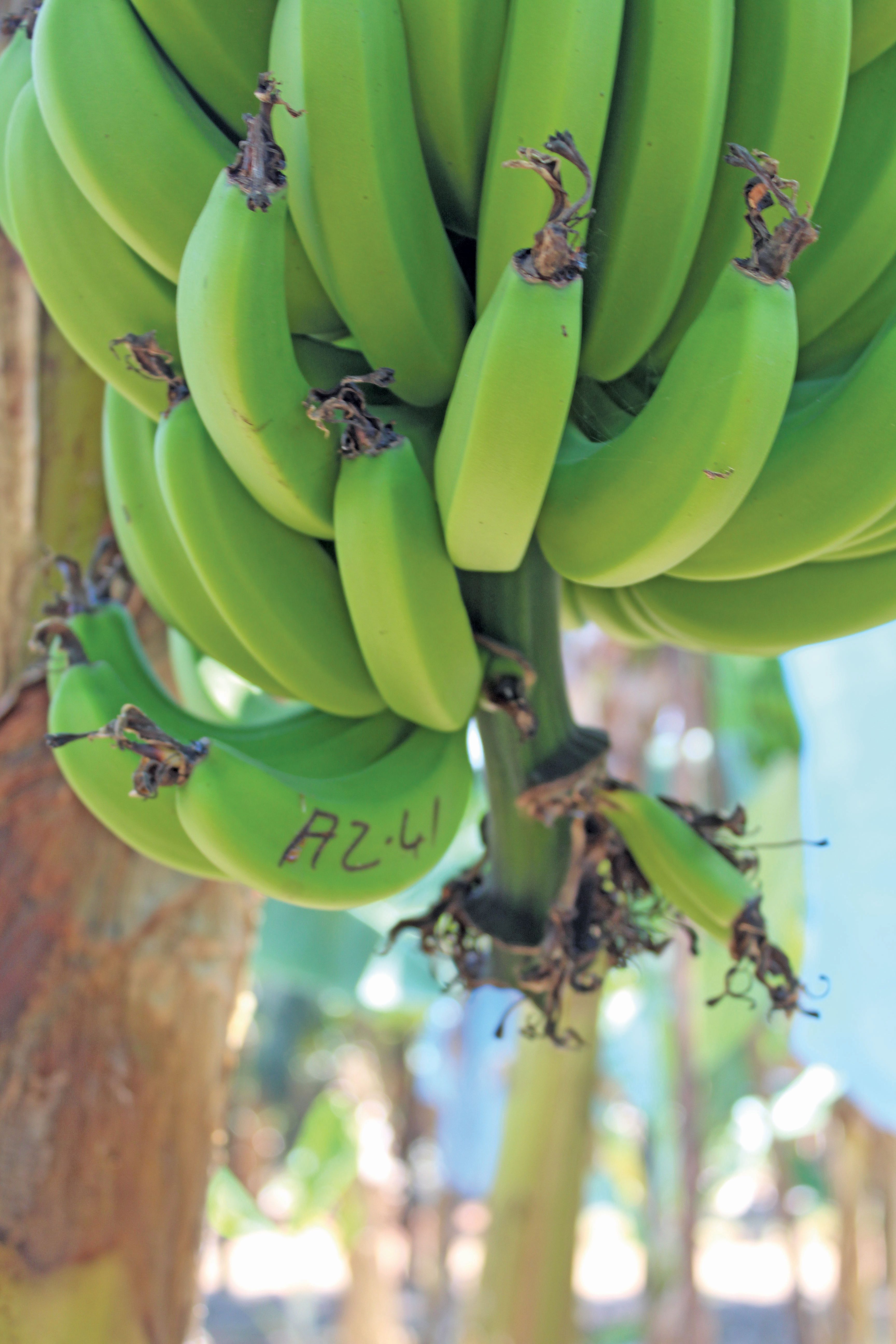
The farm is divided into territories, each managed by a supervisor. Within these territories, staff are split into two teams: fruit care and plant care. Plant care teams focus on fertilisation, pest control, irrigation, weed and sucker management.
Fruit care teams are responsible for maintaining the banana bunches, which includes propping up the plants, deflowering, removing dead leaves, preventing the bananas from rubbing against poles, and tying protective bags around the bunches.
Each worker manages a specific area, which allows supervisors to monitor both productivity and proficiency.
“We have benchmarks for every task, so everyone knows what level of productivity is expected. Tasks and areas are assigned to specific workers, enabling accurate tracking of output and quality. If there are consistent issues – like poor sucker management or lower fruit quality – it’s easy to identify who needs support and implement remedial action.”
While technical knowledge of fertilisation, irrigation and general production can be acquired through experience or literature, De Villiers emphasises that success ultimately depends on staff performance.
“You can have the best plan on paper, but it’s the people who make it happen. They must be properly trained, managed and monitored.”
He uses the example of bagging banana bunches.
“It’s not as simple as tying a bag around the fruit. The knot must be tied high enough so the bag slopes downward, allowing rainwater to run off. If water collects at the top of the bunch, it can heat up in the sun and burn the bananas. Similarly, the knot must allow hot air to escape, otherwise it creates oven-like conditions inside the bag that damage the fruit. When we started managing the staff to improve bag placement, we saw an immediate improvement in banana quality.”
Ultimately, the goal is to maximise the proportion of first-grade fruit. De Villiers notes that there is a big price difference between first- and second-grade bananas.
“We’re working towards a 90% first-grade packout. We’re not there yet, but improving how bags are placed and fruit is managed is a vital step.”
He adds that while weather conditions inevitably influence quality, human error can also cause significant losses.
“Labour costs are the same whether staff do the job right or not, so it’s crucial to ensure they do it right. You have to keep monitoring, evaluating, and providing feedback.”
For De Villiers, the revival of Giba banana farm is a culmination of 30 years spent in the industry, proving what can be achieved through disciplined management, data, and dedication.
“Bananas don’t forgive poor timing or poor training,” he says. “If you get the basics right, the plants will reward you,” he says.


